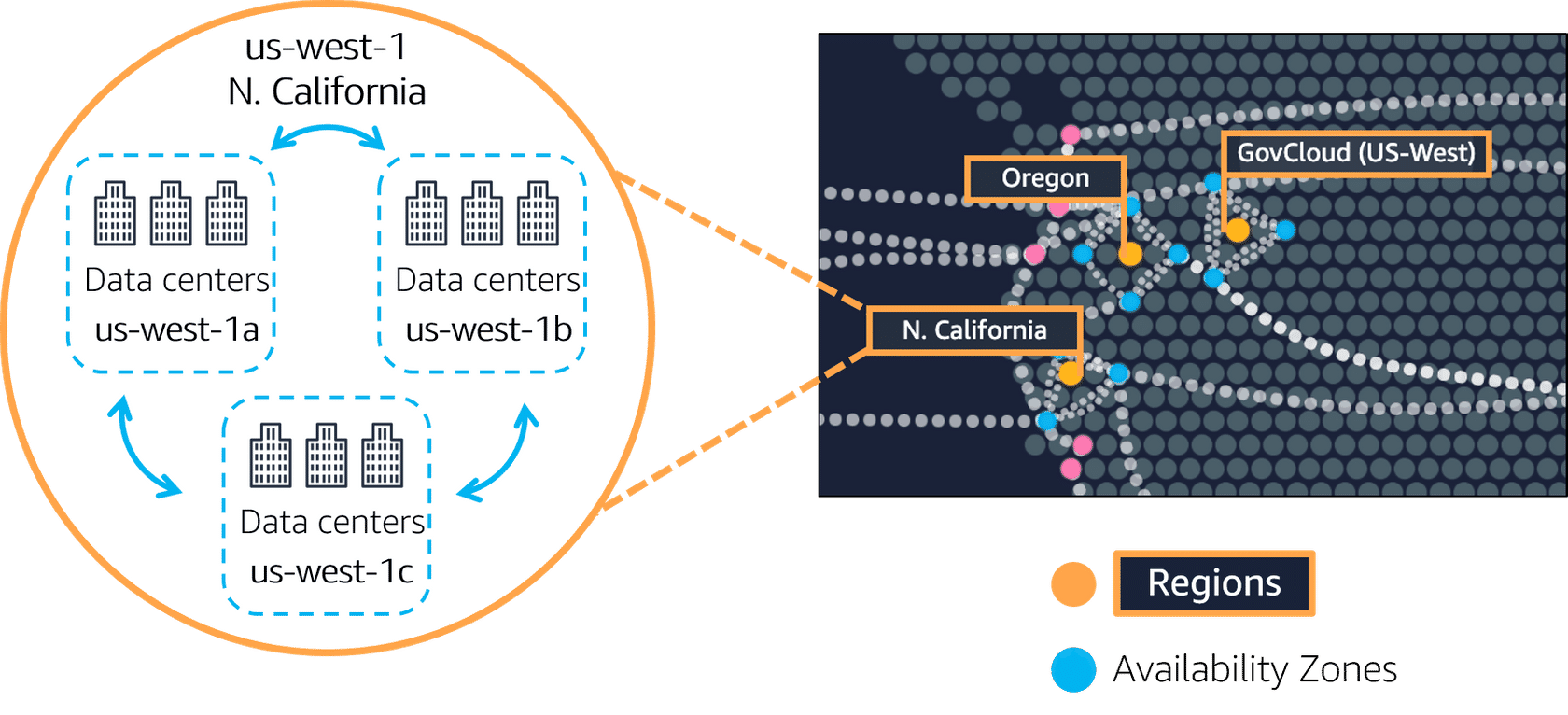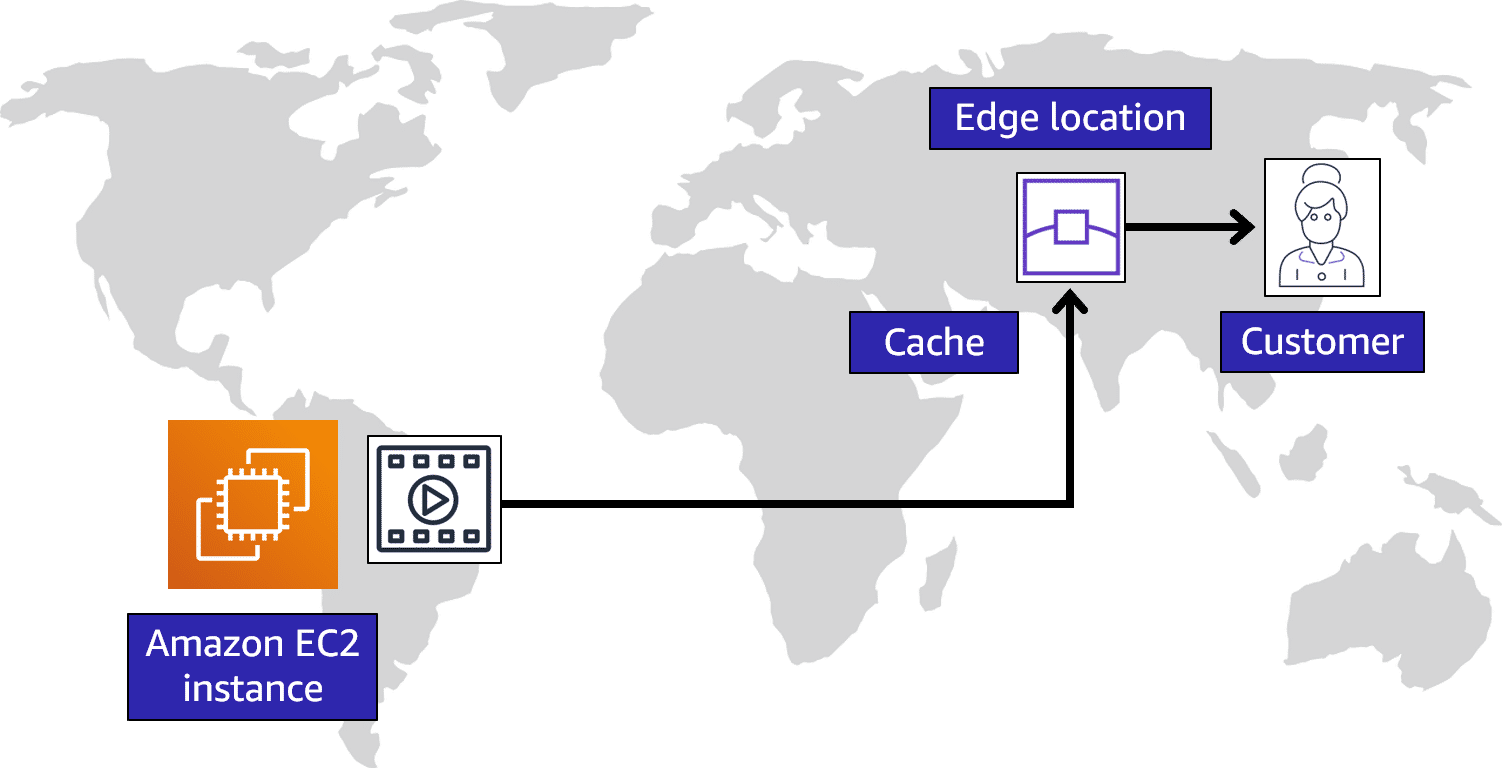Difference between AWS Region, Availability Zones and Edge Locations
 Jay Tillu
Jay Tillu
In the world of cloud computing, Amazon Web Services (AWS) stands out as a leading provider, offering a vast array of services to power businesses of all sizes. To effectively leverage AWS, it's essential to understand its infrastructure components: Regions, Availability Zones, and Edge Locations. These elements play crucial roles in ensuring the reliability, scalability, and performance of applications hosted on AWS.
Understanding AWS Region
An AWS Region is a geographically distinct area where AWS deploys its cloud infrastructure. Think of it as a self-contained ecosystem of data centers, networking facilities, and compute resources situated in a specific geographical location. These Regions are strategically distributed across the globe, enabling AWS to cater to the diverse needs and requirements of its customers worldwide.
Why do AWS Regions Matter?
Geographic Proximity - AWS Regions allow businesses to deploy their applications and services closer to their target audience, reducing latency and improving responsiveness. For instance, a company serving customers in Asia may choose the Singapore Region for optimal performance in that region.
Fault Tolerance and High Availability - Each AWS Region comprises multiple Availability Zones (AZs), which are isolated data centers within the same geographic area. This architecture ensures redundancy and fault tolerance, as applications can be distributed across different AZs to withstand failures or outages.
Compliance and Data Residency - With data privacy regulations becoming increasingly stringent, AWS Regions play a crucial role in ensuring compliance with local laws and regulations. Customers can choose the Region that aligns with their data residency requirements, ensuring that sensitive data remains within specific geographic boundaries.
Service Resilience - AWS Regions are designed to operate independently of each other, meaning that a disruption in one Region does not affect the services hosted in other Regions. This resilience enhances the overall reliability and availability of AWS services.
Understanding AWS Availability Zones

AWS Availability Zones are distinct, physically separate data centers within a single AWS Region. Each Availability Zone is equipped with its own power, cooling, and networking infrastructure, ensuring isolation from failures in other Zones. This architectural design provides redundancy and fault tolerance, allowing applications to remain operational even in the event of failures or disruptions.
The key benefit of Availability Zones is achieving high availability for your applications. This means ensuring your applications are operational and accessible to users even if there's an unexpected issue in one AZ.
By deploying your resources (like virtual servers) across multiple AZs within a Region, you create a safety net. If one AZ experiences an outage, your application can continue functioning using the resources in the remaining AZs.
Choosing the Right Number of AZs
There's no one-size-fits-all answer to how many AZs to use. It depends on your specific needs and risk tolerance. Here are some general considerations:
For critical applications: Deploying across multiple AZs is highly recommended to minimize downtime risks.
For less critical applications: You might choose a single AZ for cost-effectiveness. However, be aware of the potential for outages.
Understanding AWS Edge Locations

An edge location is a site that Amazon CloudFront uses to store cached copies of your content closer to your customers for faster delivery. Edge Locations focus on one key task: content caching. They are typically positioned near major population centers to be geographically close to end users.
Why does AWS need Edge Locations?
Suppose that your company’s data is stored in Brazil, and you have customers who live in India.
To provide content to these customers, you don’t need to move all the content to one of the Indian Regions. Instead of requiring your customers to get their data from Brazil, you can cache a copy locally at an edge location that is close to your customers in India.
When a customer in India requests one of your files, Amazon CloudFront retrieves the file from the cache in the edge location and delivers the file to the customer.
The file is delivered to the customer faster because it came from the edge location near India instead of the original source in Brazil.
Benefits of Edge Locations
Reduced Latency: By minimizing the physical distance data needs to travel, Edge Locations significantly decrease latency (delay) for users. This translates to quicker page load times, faster video streaming, and an overall improved user experience for applications that rely on content delivery.
Improved Scalability: Edge Locations help manage high traffic spikes by distributing content across a wider network. This ensures your application can handle surges in user requests without performance degradation.
Global Reach: With Edge Locations strategically placed around the world, users can access your content quickly regardless of their location.
Examples of Services that Utilize Edge Locations
Amazon CloudFront: A Content Delivery Network (CDN) that stores content at Edge Locations for faster delivery.
AWS Global Accelerator: Routes traffic to the optimal AWS endpoint based on user location and network conditions, often utilizing Edge Locations.
Amazon Route 53: A Domain Name System (DNS) service that can also leverage Edge Locations to direct traffic closer to users.
Difference between AWS Regions, Availability Zones, and Edge Locations
Purpose: Regions and Availability Zones focus on infrastructure redundancy and fault tolerance, while Edge Locations are geared towards content delivery and acceleration.
Physical Isolation: Regions and Availability Zones are physically isolated data centers, whereas Edge Locations are distributed PoPs optimized for content caching and delivery.
Number: AWS operates multiple Regions worldwide, each containing multiple Availability Zones. In contrast, there are hundreds of Edge Locations across the globe, forming a global network for content delivery.
Here's a table summarizing the key differences:
| Feature | AWS Region | Availability Zones | Edge Locations |
| Type | Geographic Area | Data Centers Within Region | Individual Sites |
| Purpose | Host all AWS services | High Availability within the Region | Faster Content Delivery |
| Redundancy | Geographically spread | Independent within Region | Not applicable |
| Services offered | All core AWS services | Same as Region | Limited (e.g., caching) |
| User selection criteria | Latency, data residency | High Availability | User proximity |
| Examples | US East (Virginia) | us-east-1a, us-east-1b | Palo Alto, California |
Here's a quick reference to guide your AWS deployment decisions:
Focus on global reach and data residency? Choose a Region.
Prioritize high availability within a Region? Deploy across multiple AZs.
Need lightning-fast content delivery for your users? Utilize Edge Locations with CloudFront.
Conclusion
Regions are geographically isolated areas where you can access services needed to run your enterprise.
Regions contain availability zones that allow you to run across physically separated buildings, tens of miles of separation, while keeping your application logically unified. Availability zones help you solve high availability and disaster recovery scenarios without any additional effort on your part.
AWS Edge locations run Amazon CloudFront to help get content closer to your customers no matter where they are in the world.
Learn More About Cloud Computing
Follow me for more such content
Subscribe to my newsletter
Read articles from Jay Tillu directly inside your inbox. Subscribe to the newsletter, and don't miss out.
Written by

Jay Tillu
Jay Tillu
Hello! I'm Jay Tillu, an Information Security Engineer at Simple2Call. I have expertise in security frameworks and compliance, including NIST, ISO 27001, and ISO 27701. My specialities include Vulnerability Management, Threat Analysis, and Incident Response. I have also earned certifications in Google Cybersecurity and Microsoft Azure. I’m always eager to connect and discuss cybersecurity—let's get in touch!